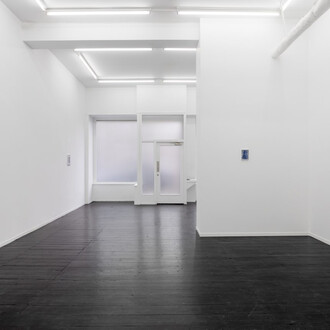Margot Samel is pleased to present Spikes that bite, a group exhibition featuring artists Yui Kugimiya, Wynnie Mynerva, Narcissister, MaryAudrey Ramírez, Sevina Tzanou, and opening on December 14, 2022.
For the artists included in Spikes that bite, desire is an anchor point to which the female form is constructed, negotiated, destroyed, and reclaimed. What does society expect of what is female or feminine? What does it demand it perform as? And what does it expect it to provide for its pleasure? Since the 1970’s expansion of feminist and psychoanalytic modes of critical analysis brought a new language to representations of sexuality, desire has been viewed as a motivational force for the means by which subject roles in society are structured.
The five artists in this exhibition challenge and expand upon this subjective turn through illustrating how desire is multiplicity in and of itself, containing locus points not only projected onto the female body, but found from within and projected back outwards as strategies of survival, appropriation, and subversion. Materiality and figuration throughout the exhibition tend to these themes through a series of evocative portrayals of pleasure and pain. As each of these artists explore the cycles of rebirth inherent to the female form through situated societies and cultural practices, fragmentation and reformation repeat in mediated celebration of both the euphoric and the grotesque.
Yui Kugimiya (b. 1981, Tokyo, Japan) paintings work with strategies of refiguration. Feline figures move through fields of color in hypersexualized form to examine the ways in which fantasy plays a crucial role in the quotidian experience of desire. The everyday, a long running theme in Kugimiya’s practice, finds tension here with the constant demand for the climactic experience of sexuality. Rather than a submissive response to this call for constant performance, the artist’s exploration of anthropomorphic characters through fetish imagery mediates this conforming demand to allow for a more liberating if not playful return of desire to the female fantastic point of view.
Wynnie Mynerva (b. 1993, Lima, Peru)’s oil paintings queer not only the figuration of sexual imagery but the very performative act of looking as a sexual act of liberation. Through a reappropriation of form and expression, her canvases bridge abstraction to trace movements of desire, studying fetish imagery as an expansive space into the psychically unknown.
Narcisisster (b. 1971, New York, US) focuses on race, gender, and sexuality through a constant renegotiation of the self, and its inherent performative nature within contemporary society against heteronormative structures of surveillance and policing. Drawing from the myth of Narcissus, selfpossession becomes a strategy where humor is deployed to turn a lens back on the ways contemporary society rewards a specific kind of female narcissism. Appropriating methods of self-presentation through combining her professional experience as a dancer and the methodologies of Black radical feminism, her constant performative persona amplifies the ways in which those assigned sexuality and racial deviant from “the norm” have always had to reinvent what was expected of them in order to survive. For Spikes that bite, three masks and a series of collages translate the legendary performance artist’s work into an archive of those constant negotiations, mapping a history of collage invented through Black femininity.
Mary-Audrey Ramírez (b. 1990, Luxembourg) deploys the language of the uncanny in her sculptures. Both material explorations of form and perception, her latex and fabric bodies insist on the imaginary worlds they come from. They evoke bondage subculture, science fictions, cosplay, or video games to reveal the very constructed nature of female subjectivity particularly in its construction through the lens of contemporary technology.
Sevina Tzanou (b. 1994, Athens, Greece ) collapses bodies, space, and time in her painting process. Through an engagement with Burlesque, drama, and drag communities she explores the subjectivity of the femme; a hyperfeminine performance which celebrates and annunciates the queer characteristics of femininity. Through a hyper-visualization of femininity, Tzanou’s work, and notions of the femme, call attention to the very constructed nature of femininity and reclaim that construction with all its glossy, frilly, rich characteristics inherent in its deployment.
















